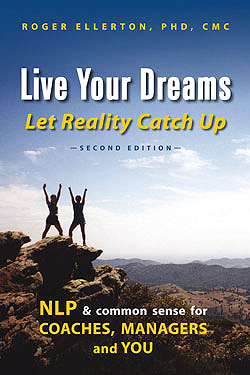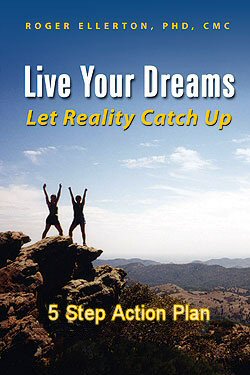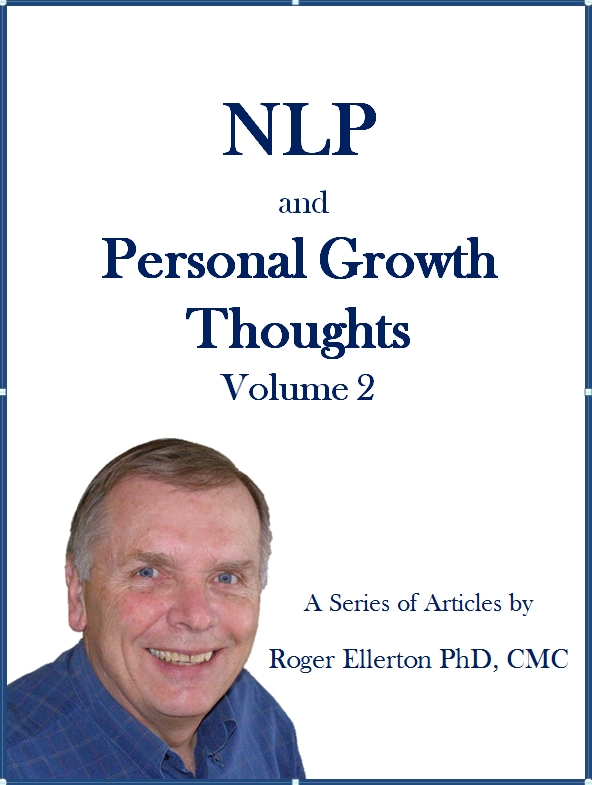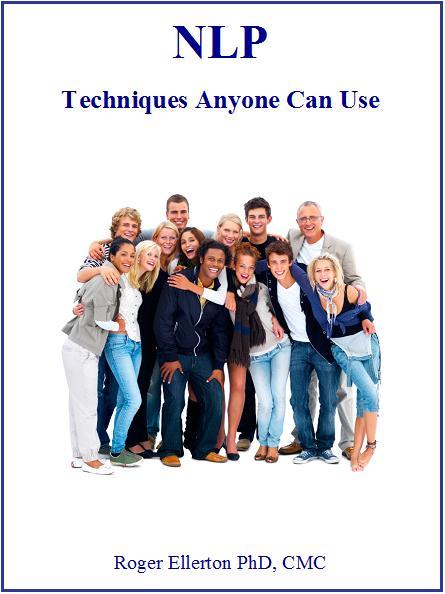Walking with Grace and Power
By Roger Ellerton Phd, ISP, CMC, Renewal Technologies Inc.
This article may not be republished without written permission from Roger Ellerton/Renewal Technologies Inc. If you republish this article without permission, you will be in violation of copyright law and sent an invoice. You may share this and other pages with your friends by linking directly to this page from your website or blog.
When NLP was first developed, it was mainly focused on the conscious manipulation of internal representations, for example adjusting submodalities. That is, the unconscious mind was not directly engaged in the process. Since the conscious mind can processes seven plus or minus two items at a time while the unconscious mind runs the whole body, stores and organizes memories, is the domain for memories, can work in multiple timeframes and logical levels, ...; it is not surprising that effective and long lasting change should involve the unconscious mind. John Grinder and Judith Delozier realized this and developed what they called NLP New Code. One of the exercises of NLP code is called Walking with Grace and Power.
Walking with Grace and Power is a kinesthetic pattern (gets the body involved), does not require the participation of the conscious mind and makes use of the connection between your internal representations and your physiology. (See, for example my article on the NLP Communication Model.) That is, maintaining a positive and resourceful physiology while thinking of a less than resourceful experience helps your client to 'rewire' the neurology and overwrite the less than resourceful response. As this exercise involves using the body, it is a great exercise to use with children, as well as adults.
As with many NLP processes, it is not necessary for the coach to know the issue that the client is working on.
Walking is just one way to use this pattern. If the client is capable of other kinesthetic activities that require a fair degree of concentration to maintain excellence, then these could be used as an alternative. For example: dancing, drumming, juggling, Tai-Chi, martial arts patterns. The coach must understand the activity well enough to spot slips from excellence and be able to issue corrections.
The excellent state must be maintained for several minutes (up to 15 minutes) before the non-resourceful situation (choicepoint) is re-introduced in order to get the full physiological biochemistry activated.
If the physiology deteriorates, the choicepoint is set aside until excellence is restored in the walking state.
The basic steps are as follows:
- Once the client and coach are in rapport, the client identifies a situation (from either a pattern of behaviour or a future specific situation) where the client wants to either have more of an existing resource or to add a new resource or quality in that situation, in order to get a better outcome in the future. The client then sets that situation aside for the moment.
- The client walks in a pattern that is a minimum of 10-12 feet (e.g. circle, oval or back and forth). As the client walks, the coach suggests changes to the client's physiology (e.g. by altering the position of the head, neck, shoulders, breathing pattern, posture, length of stride, position of feet etc.) in order to achieve excellence (grace, power, confidence and elegance). This can be done verbally or by touch adjustments.
- The client continues to walk while making a mental inventory of the new style. The coach monitors the client to ensure that the new style is being maintained.
- While maintaining the quality of the walk the client thinks their way through the situation identified in 1. The coach encourages the client and monitors the quality of the walk. If the quality falters, the coach has the client return to the resourceful state in step 2.
- Once the situation in step 1 has been completely thought through end-to-end while maintaining the quality of the walk, the client stops walking.
- Test and future pace.
Author: Roger Ellerton is a certified NLP trainer, certified management consultant and the founder and managing partner of Renewal Technologies. The above article is based on his book Live Your Dreams Let Reality Catch Up: NLP and Common Sense for Coaches, Managers and You.
Copyright © 2006, Renewal Technologies Inc. All rights reserved.








